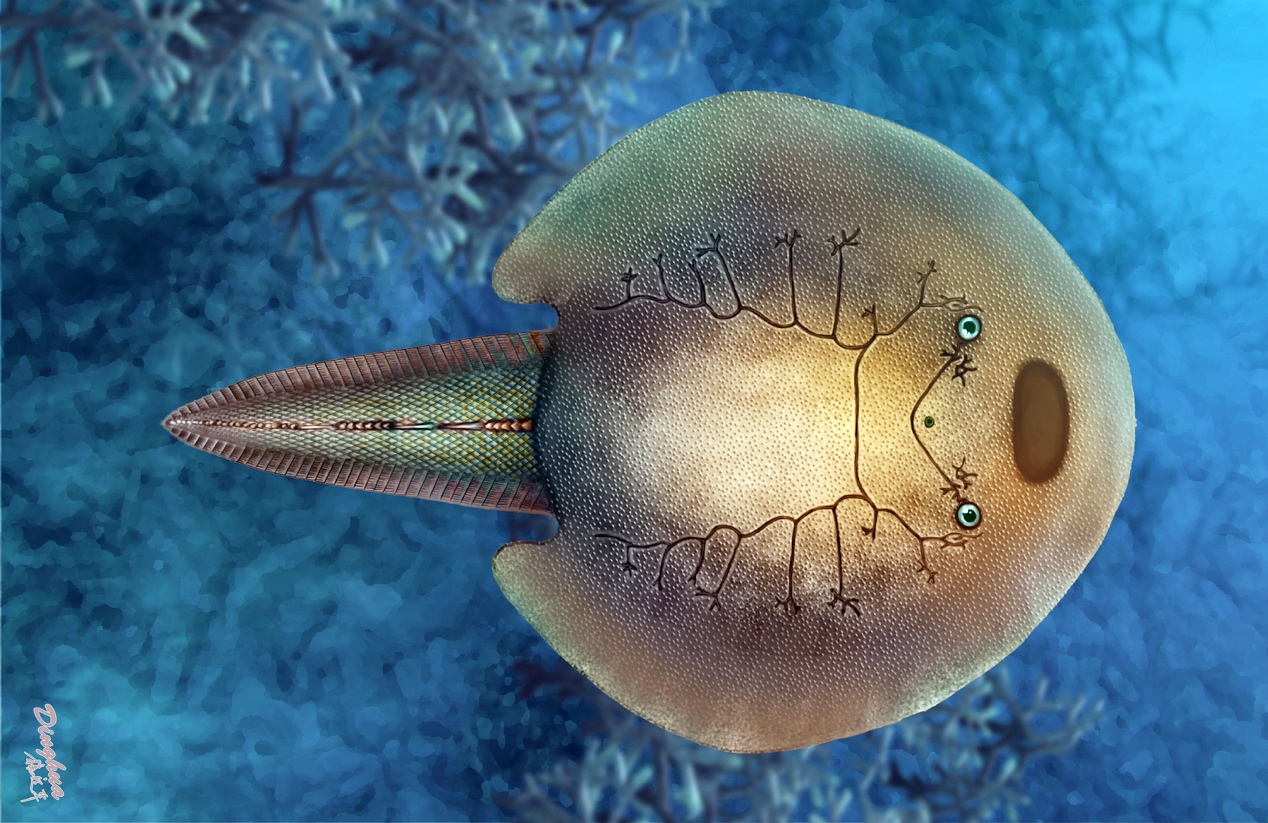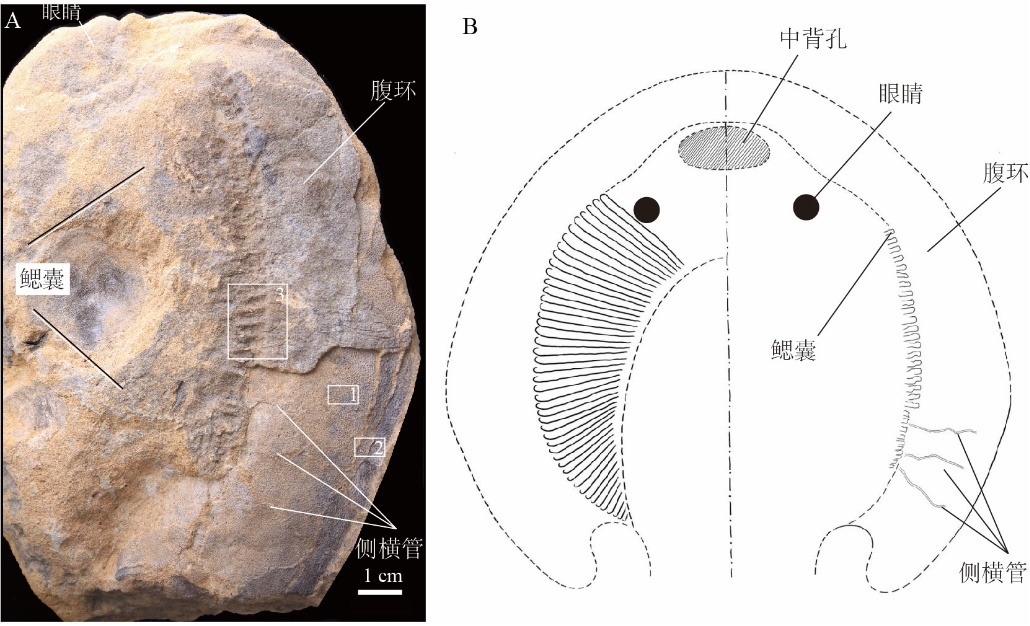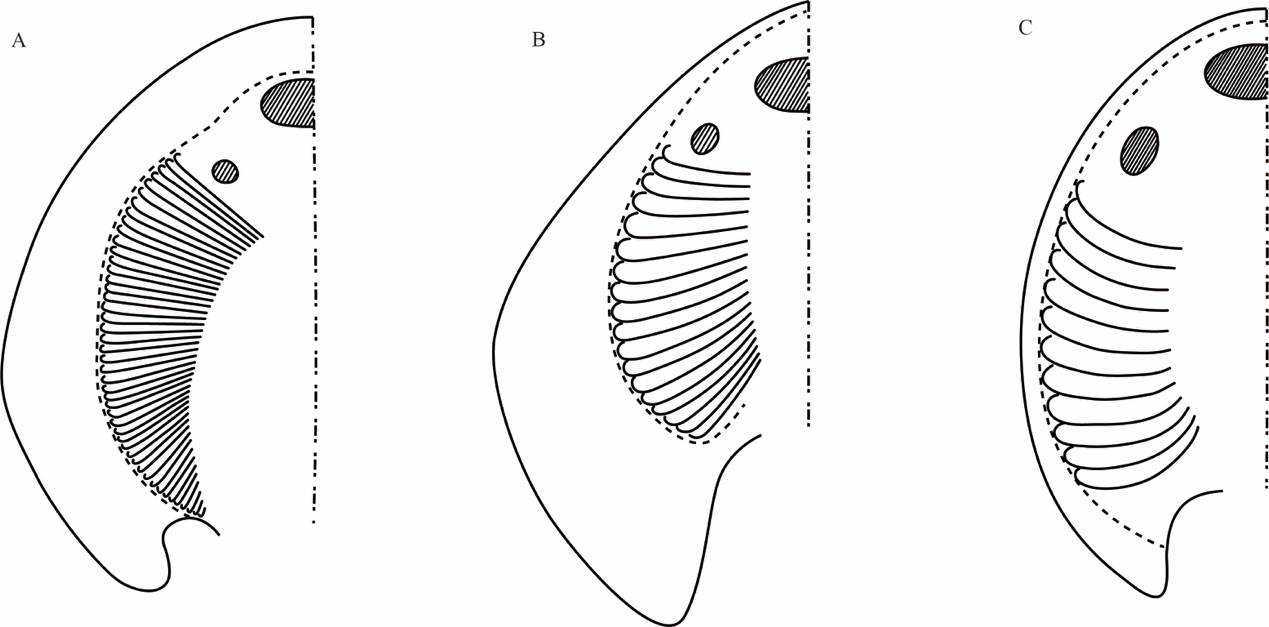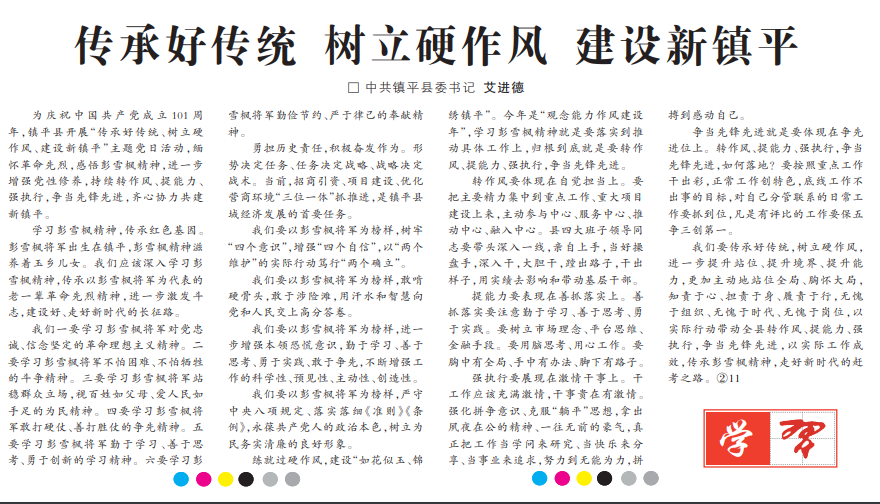Ocean hypoxia, in order to survive for 20 million years, how hard this fish was 390 million years ago
Author:Report Time:2022.07.11
Recently, the well -known academic journal "Journal of the Cardeillary Zoom" has published the latest research results on the polysmis of muddy bunkers and the ancient human research institutes of the Chinese Academy of Sciences. The study was first reported for the first time in the northeast of the northeast of Chuxiong and Yi Autonomous Prefecture, Yunnan, the Mud Pen Pen Shi Eiffel period (about 390 million years ago) The Haikou group found in the Haikou Group, the Oriental Fish, which represents so far, it has so far. The number of armor with the largest number of gill sacs can be up to 45 pairs of gill sacs, which is more than 7 times that of the most primitive armor of the Zhi Li Ji period.

▲ Oriental fish ecological restoration map (Yang Dinghua painted)
The number of gill sacs of armor fishes has increased, which has always been an evolutionary phenomenon that is difficult to explain. The new discovery shows that the evolutionary response of armor in the ocean hypoxia that has repeatedly occurred in early mud pelvis may be The secret of the mud pelvic world. The new discovery is not only the first report of the fossils of the mud pelvic fossils in the middle of the Yunnan Province. The period (about 410 million years ago) expanded to the Mud Pen Pen Shi Eiffel period (about 390 million years ago), which lasted about 20 million years back. This not only fills the geological gaps of the mud pelvic world in the Yunnan area, but also increases our understanding of the radiation evolution and diffusion and migration routes of the armor of the armor in the mud. The coordinated evolution of the number of sachets and the early marine hypoxia incident in the early Emus period is of great significance.
"Hometown of Dinosaurs" for the first time discovered the medium mud pot armor
Yunnan Chuxiong and Yi Autonomous Prefecture is known as the "Treasure Treasury" and "Hometown of Dinosaurs". The muddy basin strata of Wing County in the autonomous prefecture is more developed. Most of them are deposited in land phase and coastal. They have produced rich fossils of fish.
In 2014, Wang Junqing, an ancient spine, accidentally found a strange specimen when he sorted the specimen collected from the field in the 1980s. The specimen is covered with dust, which is extremely difficult to identify. After washing with water, it is recognized by a part of the gill fish headwriting with obvious features.
This fossil is produced from the Haikou group in Longtan Village near Wuding County, Chuxiong and Yi Autonomous Prefecture, Yunnan, and the Haikou group in Zhaojiazhuang. The rocks of fossils are exactly the same.

▲ Oriental fish fossil photos and recovery pictures (Photo by Gai Zhiyu, painted Guo Xiaocong)
Still hugging the pipa's half -covered Oriental fish waiting for the order
Armor turtle is a high -diversity and has a strong jaw -free category. There are currently 66 species of 90 species, which are only found in China and northern Vietnam. Except for the base of the armor, the armor can be divided into three single -type groups -real helmet turtles, gill fish eyes and South China fish eyes. Oriental fish belongs to the system classification of the armor of the armor of the armor.
The oriental fish fossils discovered this time only preserved the abdominal ring on the left side of the head armor, but this is already the best armor specimen to save the best armor. The new specimen is round, but only half is stored, a bit like the pipa exposed only half of the ancient China. Although this specimen is incomplete, it has the typical characteristics of polysmiafish, that is, it has more gill sacs (at least 37 pairs of gill sac) in the gill area, but according to the length of the abdominal ring and the width of each gill sac, it should be calculated. Like the huge oriental fish, there are up to 45 pairs of gill sacs.
In addition, the storage part of the specimen indicates that its abdominal ring is wide and long, which is a larger gill fish with large individuals. The orbital holes are large and round, at least 3 sides of the horizontal tube. These features, especially the number of gill sacs, indicate that they should belong to Oriental Fish. However, because the specimen does not save key information such as nostrils and orbital holes, because the secondary research team has not named new species for the time being, it is regarded as an oriental fish to be set.
The secrets of the most gill sac or oriental fish survival in history
Gills are the most important respiratory organs of the gill fish and an important place for oxygen exchange. Among armor, the number of gill sacs is very different in different groups, and it is one of the important basis for classification. Throughout the ground history of armor, the number of gill sac areas can be followed. The number of gill sacs in the early armor is small. Only 6-7 pairs of gill sacs may represent the ancestor of the armor of the armor. More than 10 pairs of gill sacs are more than 10 -pair of gills, which starts in the radiation of the early mud pelvis. During this period, the number of gills of armfish was less than 20 pairs. In the early mud basin Fabe period, the number of gill sacs increased to more than 30 pairs in some group groups, and the huge oriental fish had 45 pairs of gill sac.

▲ Oriental fish (A), wide turtle (B) and gill fish (C) gill sac comparison chart (painted by Guo Xiaocong)
The above situation shows that the increase in the number of gill sacs of the armor of the armor is a evolutionary trend during the period of Zhili-Pen Pot. French paleo -biologist Philip. Weiye believes that the number of armor gill sacs increased by a survival strategy that used to compensate for insufficient oxygen supply caused by the flat.
During the early mud basin, the continents of my country at that time were in low latitudes, and most of them were in the low latitudes near the equator. The sun was sunny, the climate was warm, oxygen, and the water was clear. This environment is very suitable for the survival of various fish. For polygnic fish, a small amount of gill sac is enough to ensure the needs of its life body for oxygen.
However, many global sea level lifts, marine hypoxia or poverty oxygen, and biostatic or replacement incidents have occurred in several times. Oxygen causes hypoxia in shallow seas. Armor turtle has always been considered to survive in a shallow sea or coastal environment. The gill sac as the main respiratory organs of armor of the armor, the evolution of the number of them can reflect the response to the hypoxia incident of the ocean to a certain extent. Essence But in real time, the vast majority of the armor of the armor is also extinct in the biological incident in the early Emus period. Only the oriental fish has the most historical gill sac that has the most history. The secrets of surviving in the extinction of hypoxia are survived.
Meng Xinyuan, a master's degree from the Institute of Ancient vertebrates and the Institute of Ancient Human Research of the Chinese Academy of Sciences, is the first author of the dissertation.
Author: Xu Qimin
Photo: Provided by the ancient spine of the Chinese Academy of Sciences
Editor in charge: Ren Quan
*Wenhui exclusive manuscript, please indicate the source for reprinting.
- END -
Nanyang Daily published an article "Inheritance of Traditional and Establishing a New Zhenping"

In order to celebrate the 101st anniversary of the founding of the Communist Party...
The ruling party was first suspended, and the suspected launch of the rocket artillery shells. The Korean government was hit by double -sided!

Li Junxi data map. Picture source IC Photo Korean media said that Li Junxi, who ha...